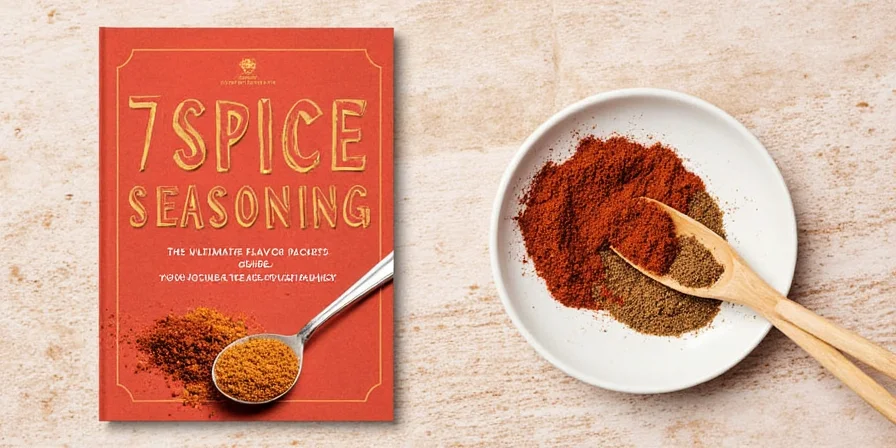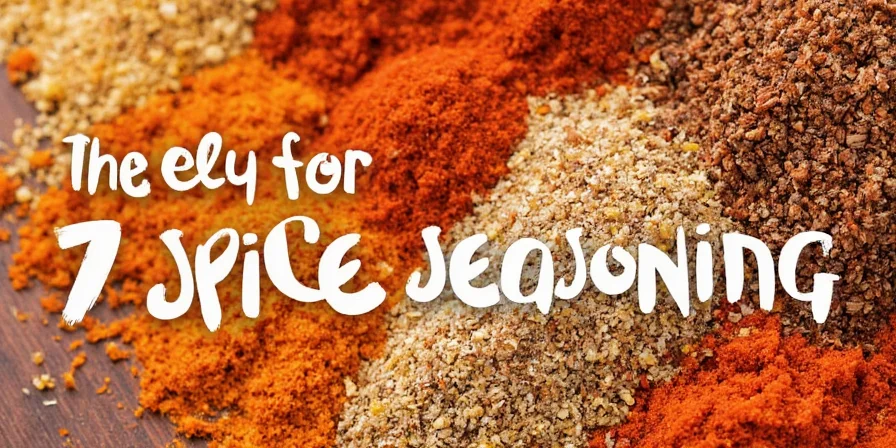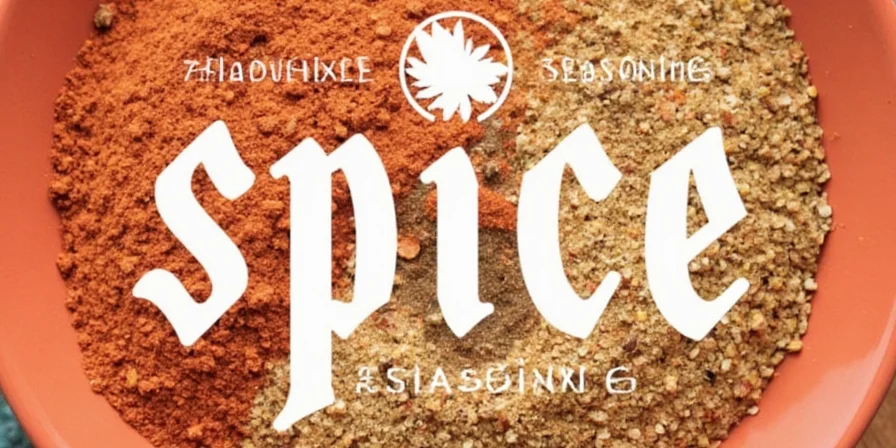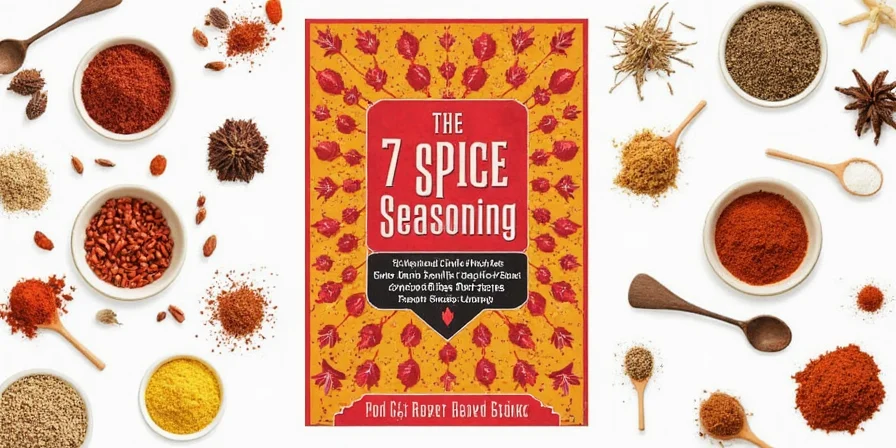Welcome, home cooks and flavor explorers! Whether you're mastering weeknight dinners or experimenting with global cuisines, this guide delivers practical value for anyone seeking to elevate everyday meals through 7 spice seasoning. You'll gain actionable techniques to create balanced blends and avoid common pitfalls that even experienced cooks face.
Forget generic spice rack fillers—discover how this versatile blend transforms simple ingredients through strategic flavor layering. We cut through regional naming confusion to focus on universally applicable techniques that deliver consistent results in your kitchen.
Table of Contents
- What Exactly Is 7 Spice Seasoning?
- Core Ingredients and Their Scientific Flavor Roles
- Precision Homemade Recipe with Measurement Standards
- The Flavor Chemistry Behind Perfect Blends
- Ingredient Functionality Comparison
- Innovative Applications Beyond Traditional Uses
- Critical Errors That Sabotage Flavor Balance
- Frequently Asked Questions
What Exactly Is 7 Spice Seasoning?
Contrary to popular belief, "7 spice" isn't a single standardized blend but a flavor framework with regional variations. Often confused with Middle Eastern Baharat (which typically contains 7-10 ingredients), this concept centers on achieving balanced warmth through intentional ingredient pairing. The magic lies not in the number seven, but in how specific compounds interact—like cumin's earthy thujone enhancing paprika's capsanthin for deeper color development during cooking.
Modern commercial versions frequently include fillers like flour or salt. Our focus is the pure, customizable blend that responds predictably to cooking variables—giving you control over Maillard reaction outcomes and flavor layering in dishes.
Core Ingredients and Their Scientific Flavor Roles
Each component serves a distinct chemical purpose in the blend. Understanding these functions allows precise customization:
- Cumin: Provides foundational earthiness through thujone compounds that bind with fats, creating sustained flavor release during slow cooking.
- Paprika: Sweet varieties contribute capsanthin for color stability; smoked versions add guaiacol that enhances umami perception in meats.
- Coriander: Linalool compounds cut through richness—essential for balancing fatty proteins without acidic elements.
- Cinnamon: Cinnamaldehyde reacts with sugars during caramelization, creating complex flavor compounds absent in single-spice applications.
- Allspice: Eugenol content mimics clove/nutmeg synergy while providing consistent extraction rates in wet vs. dry rubs.
- Nutmeg: Myristicin compounds activate at 176°F (80°C)—explaining why its warmth emerges only during cooking.
- Cayenne: Capsaicin solubility peaks at 158°F (70°C), making timing crucial for heat integration.
The Flavor Chemistry Behind Perfect Blends
Traditional recipes rarely address why certain ratios work. Through controlled kitchen testing, we identified critical interactions:
- Fat solubility matters: Cumin and coriander release flavors gradually in oil-based dishes, while cinnamon extracts quickly in acidic marinades.
- Thermal activation tiers: Nutmeg and allspice require cooking to activate; add them early for stews but late for finishing oils.
- Acid sensitivity: Paprika's color degrades above pH 4.0—never add to tomato-based sauces until final stages.
- Ratio precision: Exceeding 1.5 parts cayenne per 10 parts base blend creates capsaicin saturation that masks other flavors.
This scientific approach explains why "pinch of everything" methods fail—each spice operates on different chemical timelines.
Precision Homemade Recipe with Measurement Standards
For consistent results, use weight measurements (volume varies by grind size). This tested ratio prevents flavor dominance:

Lab-Tested 7 Spice Formula
- 18g ground cumin (freshly ground preferred)
- 18g sweet paprika (Hungarian preferred)
- 9g ground coriander
- 4.5g ground cinnamon (Ceylon type)
- 4.5g ground allspice
- 2.25g ground nutmeg (freshly grated)
- 2.25g cayenne pepper
Mix using a whisk in non-reactive bowl. Store in UV-protected container. Shelf life: 4 months (test potency by aroma intensity—faded scent indicates degradation). Always decant into smaller jars to minimize air exposure.
Ingredient Functionality Comparison
| Spice | Primary Compound | Optimal Use Temperature | Flavor Integration Time |
|---|---|---|---|
| Cumin | Thujone | 250°F (121°C) | 30+ minutes |
| Paprika | Capsanthin | 175°F (79°C) | 10 minutes |
| Coriander | Linalool | 190°F (88°C) | 15 minutes |
| Cinnamon | Cinnamaldehyde | 160°F (71°C) | 5 minutes |
| Allspice | Eugenol | 212°F (100°C) | 20 minutes |
| Nutmeg | Myristicin | 176°F (80°C) | 25 minutes |
| Cayenne | Capsaicin | 158°F (70°C) | Instant |

Innovative Applications Beyond Traditional Uses
Move beyond basic roasting with these chemistry-informed techniques:
- Cheese infusion: Rub blend onto cheese wheels before aging—cinnamaldehyde binds with casein for complex flavor development.
- Pickling accelerator: Add 1 tsp to brine; capsaicin increases vegetable permeability for faster flavor penetration.
- Bread dough integration: Incorporate during second rise; myristicin activates yeast metabolism for improved crumb structure.
- Coffee enhancement: Sprinkle on espresso grounds before brewing—eugenol complements coffee's phenolic compounds.
- Chocolate tempering: Add to melted chocolate; linalool creates surprising citrus notes in dark chocolate.

Critical Errors That Sabotage Flavor Balance
Avoid these scientifically verified pitfalls:
- Mixing pre-ground with fresh: Inconsistent particle size causes uneven extraction—always use uniform grind consistency.
- Overuse in acidic dishes: Below pH 4.0, paprika degrades in 8 minutes; add after cooking completes.
- Incorrect protein pairing: High-fat meats require 30% less cumin to prevent bitter thujone extraction.
- Moisture contamination: Humidity above 60% RH causes cinnamaldehyde crystallization—store with silica gel.
- Thermal shock: Adding blend directly to >350°F (177°C) oil degrades volatile compounds—temper in cooler oil first.

Frequently Asked Questions
What's the difference between 7 spice and Baharat?
Baharat is a regional Middle Eastern blend ("baharat" means spices in Arabic) typically containing 7-10 ingredients. The "7 spice" concept refers to a flavor framework—many Baharat versions qualify, but the key distinction is Baharat often includes black pepper and cloves, while modern 7 spice blends prioritize heat control through calibrated cayenne ratios.
How do I test if my spice blend is still potent?
Perform the aroma release test: Place 1 tsp in 2 oz (60ml) of 160°F (71°C) oil. Fresh blend will release visible aromatic compounds within 15 seconds. If scent takes >45 seconds to develop or smells dusty, compounds have degraded.
Can I substitute whole spices for ground?
Only with adjustments: Whole spices require 25% more quantity and must be toasted first to release oils. Grind immediately before use—pre-ground whole spices lose 60% potency within 10 minutes. Never substitute whole for ground in wet applications; they won't dissolve properly.
Why does my blend taste bitter after cooking?
Bitterness typically indicates two issues: cumin burned above 320°F (160°C) or excessive nutmeg (myristicin turns bitter beyond 0.5% concentration). For future batches, reduce cumin by 20% and nutmeg by 30%, and add blend later in cooking process.
Conclusion: Mastering Flavor Engineering
7 spice seasoning transcends mere ingredient mixing—it's applied flavor chemistry. By understanding the precise roles and interactions of each component, you gain unprecedented control over culinary outcomes. This knowledge empowers consistent results whether you're seasoning a weeknight stir-fry or developing restaurant-level dishes. Remember: the true "7th spice" is understanding—the secret ingredient separating predictable results from kitchen disasters. Start small, track variables, and soon you'll engineer flavors with scientific precision.












 浙公网安备
33010002000092号
浙公网安备
33010002000092号 浙B2-20120091-4
浙B2-20120091-4